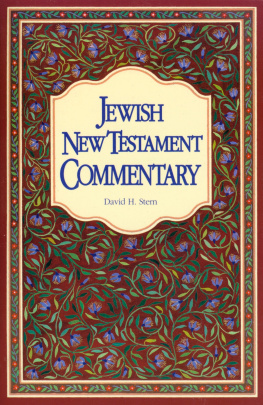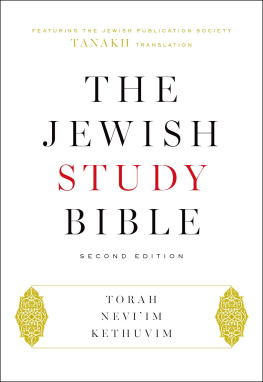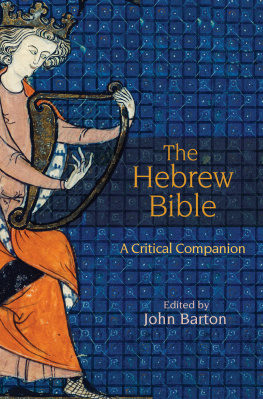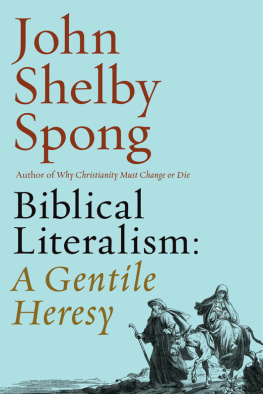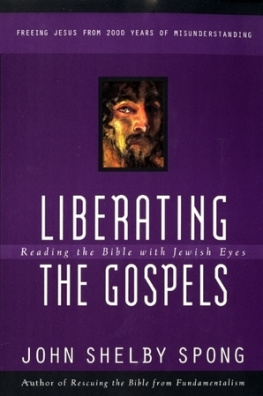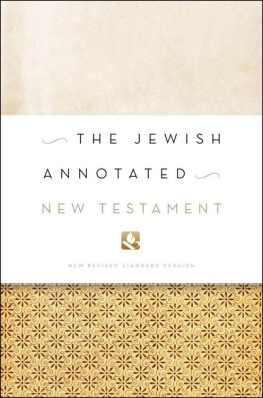The Meaning
of the Bible
What the Jewish Scriptures and
Christian Old Testament Can Teach Us
D OUGLAS A. K NIGHT
AND A MY -J ILL L EVINE

To our families
Catherine Whitehead Snow
Lisa Irene Knight
Jonathan Whitehead Snow
and
Jay Geller
Sarah Elizabeth Geller
Alexander David Geller
Contents
Gk. Greek
Heb. Hebrew
Lat. Latin
BCE Before the Common Era
CE Common Era
LXX Septuagint
MT Masoretic Text
KJV King James Version
NEB New English Bible
NKJV New King James Version
NRSV New Revised Standard Version
JPS Jewish Publication Society (Tanakh)
The Bible is many things to many peoplean ancient literary masterpiece, a cultural artifact, an authoritative scripture for Judaism and Christianity, even a weapon in the culture wars. A library of diverse literary forms including stories, songs, proverbs, laws, and prophecies, the Bible is an enigma to some readers and a delight and inspiration to others. It contains descriptions of horrific violence, strong emotions, and aesthetic beauty; it moves from sometimes incomprehensible legal prescriptions and peculiar customs to lofty poetry, dramatic narratives, and enduring moral and religious principles.
Its also the principal building block of much of Western culture. The Bibles language undergirds how we think and how we speak. It offers the menu of forbidden fruit, sour grapes, and sweet honey in the rock that many found in the land of milk and honey. It adores the apple of my eye, but nevertheless demands in cases of injury an eye for an eye. Tender mercies vie with spare the rod, although thy rod and thy staff they comfort me. To everything there is a season, which is a good thing since theres also a fly in the ointment and a drop in the bucket, both of which can leave us at wits end unless we can read the handwriting on the wall. The Bible helps us understand John Steinbecks East of Eden and William Faulkners Absalom, Absalom, along with Bette Daviss great performances in Jezebel and The Little Foxes. Josef Haydn, Jean Sibelius, Aaron Copeland, and Duke Ellington all found ways of expressing what happened in the beginning; Igor Stravinsky and Benjamin Britten gave new voice to Genesis 22, Abrahams binding of Isaac for sacrifice.
The Bible has always been, and will remain, a source of political idealism and political debate. Consequently, familiarity with the textincluding the ability to distinguish what the text says from what people through the centuries have claimed it saysis necessary for those who wish fully to understand the current rhetoric about biblical values. Some want to post the Ten Commandments in schoolrooms and courthouses; others note, correctly, that the commandments are not identical in the two texts that present them and are even reckoned differently by Jews and Christians; to post only one version would necessarily sanction one particular religious tradition.
Some want the Bible to be required reading in public schools. Although biblical literacy is to be encouraged, such instruction presents problems. Do we tell our students that the world was created in six twenty-four-hour days and that the sun stood still (Josh. 10:13) so the Israelites could win a battle, or do we present the accounts as metaphor or myth? Do we state that the prophet Isaiah predicted a virgin birth in 7:14, when the Hebrew text says nothing about a virgin? Do we insist that the suffering servant of Isaiah 52:1353:12 is a prediction about Jesus of Nazareth, when elsewhere Isaiah explicitly identifies the servant as the people Israel (49:3)? Should the text be taught as great literature or as the divine Word?
There is also a necessary distinction between asking what the text says and determining what the text means . The meaning of the Bible will be different for every reader who encounters the text; at times, the meaning changes for the same reader, for each time the text is studied new insights can arise. For some readers, the Bible is inerrant, perfect, and the source of all knowledge. For others, it is a repository of a peoples culture or a brilliant collection of stories with varying degrees of historicity. For some, it is the source of hope and inspiration; for others, it is a text of colonialism, conquest, slavery, misogyny, and homophobia. What we bring to the text necessarily determines what the text says to us. In turn, the more knowledge we have of the Bible in its original setting and the greater facility we have with the critical approaches to the text, the better we will be able to assess those meanings.
In this book, we attempt to take seriously the various ways the Bible can be and has been understood. We are interested in the theological questions the text raises. As faculty in a divinity school, part of our responsibility is to help those seeking to become priests, ministers, rabbis, and religious educators see how the text has been, can be, and perhaps should be interpreted within the communities of faith. Far too often the Bible, rather than being a rock on which one can stand, becomes a rock thrown to do damage to others. We have too much respect for the text, and for the communities that proclaim it to be sacred scripture, to ignore such concerns. Those with a specific religious stake should find these pages enhancing their knowledge and appreciation of the text.
But as faculty also in a college of arts and science, we are interested in the texts literary brilliance, moral profundity, and clues about ancient history. We attend not only to what the text has meant to religious communities, but also, in fact especially, to what it meant in its own historical and cultural context. It has been said that a text without a context becomes simply a pretext for idiosyncratic interpretation. At the very least, we do think that historical awareness coupled with attention to the meaning of the original language can help in sorting out the acceptability of interpretations.
Each reader will see something distinct in the text, just as religious communities have developed their own lenses for interpretation. The very names for the biblical text show this diversity and demonstrate as well how our vocabulary already betrays our religious influences. For the synagogue, the text is not called the Jewish scriptures (the title of the present book is intended to indicate the contents descriptively, without using technical terminology). Instead, it is called the Tanakh, an acronym. The T stands for Torah, a Hebrew term for the first five books of the Bible; N is for Neviim, the term for prophets; and the K stands for Ketuvim, or writings (the remaining books, such as Psalms, Proverbs, Esther, and Job).
For the church, the familiar term is Old Testament. The term Christian Old Testament is redundant; there is no Jewish Old Testament or Muslim Old Testament. Again, however, the label Christian Old Testament in our title signals that this present book is looking at this collection of texts not only as an ancient anthology, but also as the sacred, authoritative writings of both church and synagogue.
In the academy, the common term for this collection is Hebrew Bible, a descriptive rather than confessional name. It generally designates only the books in the Tanakh and does not include all the Old Testament books in the Catholic and Orthodox communionsdeuterocanonical Greek texts such as Judith, a fabulous account of a gorgeous widow who chops off the enemys head, with his own sword no less (see the cover art), and Susanna, what may be the worlds first detective story. Whatever term we choose to call this collection will necessarily promote a specific religious or humanistic view. And again, the meaning of the Bible will change for the reader depending on which collection of texts, or canon, is used and indeed on the translation employed.
Next page

